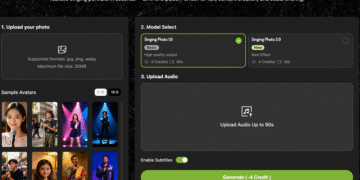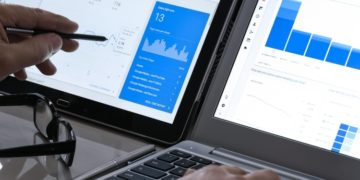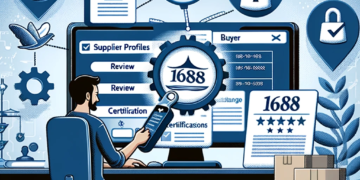Today, businesses across the UK are under increasing pressure to adapt, innovate, and deliver value to customers while protecting their bottom line. The challenges are numerous, from shifting consumer expectations to the rise of e-commerce giants. Yet, one area where many retailers are finding new opportunities is pricing. More specifically, by adopting an advanced retail pricing tool, UK retailers are simplifying operations and significantly increasing their profitability.
The Importance of Strategic Pricing in Retail
At its core, pricing is about perception and value. A product’s price not only determines profit margins, but it also influences consumer behaviour, brand positioning, and competitive advantage. Getting the price “just right” is a delicate balancing act in retail. Price too high, and you risk driving customers away. Too low, and you might sacrifice profit for volume.
Historically, many retailers have relied on a combination of instinct, historical data, and competitor benchmarking to guide pricing decisions. While this worked to an extent, the sheer complexity of today’s retail environment—characterised by dynamic online competition, inflationary pressures, and real-time consumer feedback—demands a more intelligent and data-driven approach.
This is where advanced retail pricing tools come in.
What is a Retail Pricing Tool?
A retail pricing tool is a software solution that helps retailers analyse, manage, and optimise pricing strategies. These tools gather data from various sources, such as competitor pricing, customer demand patterns, sales performance, and market trends, to suggest or automate pricing decisions. Many systems use artificial intelligence and machine learning to make real-time recommendations.
But these tools aren’t just about automation. They’re about insight. With the right solution, retailers better understand which products drive margin, where pricing is out of sync with customer expectations, and how to respond quickly to market changes.
Benefits of Using Advanced Pricing Tools
Retailers across the UK are increasingly turning to pricing tools to sharpen their strategies—for good reason. The benefits are wide-ranging and impactful.
First and foremost, these tools help maximise margins. A retail pricing tool can identify where prices can be adjusted upwards without affecting conversion rates by analysing historical sales data alongside real-time market inputs. For example, a popular product with low price sensitivity may be undervalued. Adjusting its price by just a few percentage points can yield substantial profit increases.
Another key benefit is improved competitiveness. In the age of online shopping, customers can compare prices in seconds. Dynamic pricing tools allow retailers to respond quickly to changes in competitor pricing, ensuring they remain attractive without resorting to unsustainable discounts.
Additionally, pricing tools contribute to more efficient inventory management. Products that are slow to sell can be priced more aggressively to move stock, while high-performing items can be priced to maintain momentum without over-discounting. This level of precision allows retailers to align pricing with inventory goals, reducing waste and improving cash flow.
Finally, these tools support consistency across channels. Whether a customer shops in-store or online, pricing can remain coherent and logical—something today’s consumers increasingly expect.
How UK Businesses are Putting Pricing Tools to Work
Across the UK, many businesses are seeing tangible gains from smarter pricing strategies. Take the example of a mid-sized fashion retailer operating online and through high-street outlets. Faced with rising supplier costs and inconsistent in-store footfall, the company implemented a retail pricing tool to help balance its pricing strategy across channels.
Within six months, the retailer reported a 12% increase in average margins and a 9% improvement in conversion rates. More importantly, they could identify which items could bear a higher price point without harming sales, allowing them to focus discounting efforts where it had the greatest impact.
Supermarkets and grocery chains are also leveraging pricing intelligence to manage fluctuations in demand and supplier pricing. By using tools that monitor real-time competitor prices and seasonal buying patterns, these businesses can optimise promotional campaigns and everyday pricing, leading to better stock turnover and improved customer satisfaction.
Even small independent retailers are getting in on the act. Thanks to cloud-based pricing tools that don’t require enterprise-level budgets, independent shops and niche online retailers can now use data-driven pricing to compete with larger rivals.
Common Features of Today’s Retail Pricing Tools
While solutions vary, most advanced pricing tools share some common features. These include real-time competitor price tracking, which enables businesses to adjust prices based on what others are charging in the market. Additionally, many tools offer rules-based automation, allowing retailers to set parameters for price changes while maintaining control over margins.
Some tools include demand forecasting, which uses historical data to predict how changes in pricing will impact future sales. Others integrate directly with point-of-sale systems, e-commerce platforms, and ERP software to ensure seamless pricing decisions.
Visual dashboards and reports allow retail managers and analysts to interpret complex data easily. Rather than drowning in spreadsheets, decision-makers can see trends and opportunities at a glance.
Overcoming Implementation Challenges
Of course, no technology is without its challenges. For some businesses, trusting software to make pricing decisions can feel risky. Staff training and change management are also concerns, especially in organisations used to more manual, instinct-led pricing processes.
However, these barriers can be overcome. Many providers offer extensive onboarding support, including scenario modelling to help retailers test new pricing strategies before going live. Additionally, tools can be configured to offer suggestions rather than automate changes outright, giving businesses time to build trust in the system.
The key to successful implementation lies in clear objectives and internal buy-in. Staff are more likely to embrace the change when introducing pricing tools as part of a broader strategy to improve profitability and customer experience, not just as a cost-cutting measure.
The Future of Pricing in Retail
As the retail sector evolves, pricing becomes more complex and critical. With inflation, supply chain disruptions, and shifting customer loyalty all part of the landscape, reactive pricing simply won’t be enough.
In this context, the retail pricing tool is set to become a standard part of every retailer’s strategic toolkit. By embracing data, automation, and intelligent systems, UK retailers can move from gut-feel decisions to evidence-based strategy, ultimately gaining a sharper edge in a crowded marketplace.
By investing in the right tools and committing to data-led decision-making, UK businesses can unlock new levels of profitability, agility, and customer satisfaction. In doing so, they’ll be better equipped to face whatever challenges the retail world throws at them next.
David Prior
David Prior is the editor of Today News, responsible for the overall editorial strategy. He is an NCTJ-qualified journalist with over 20 years’ experience, and is also editor of the award-winning hyperlocal news title Altrincham Today. His LinkedIn profile is here.











































































